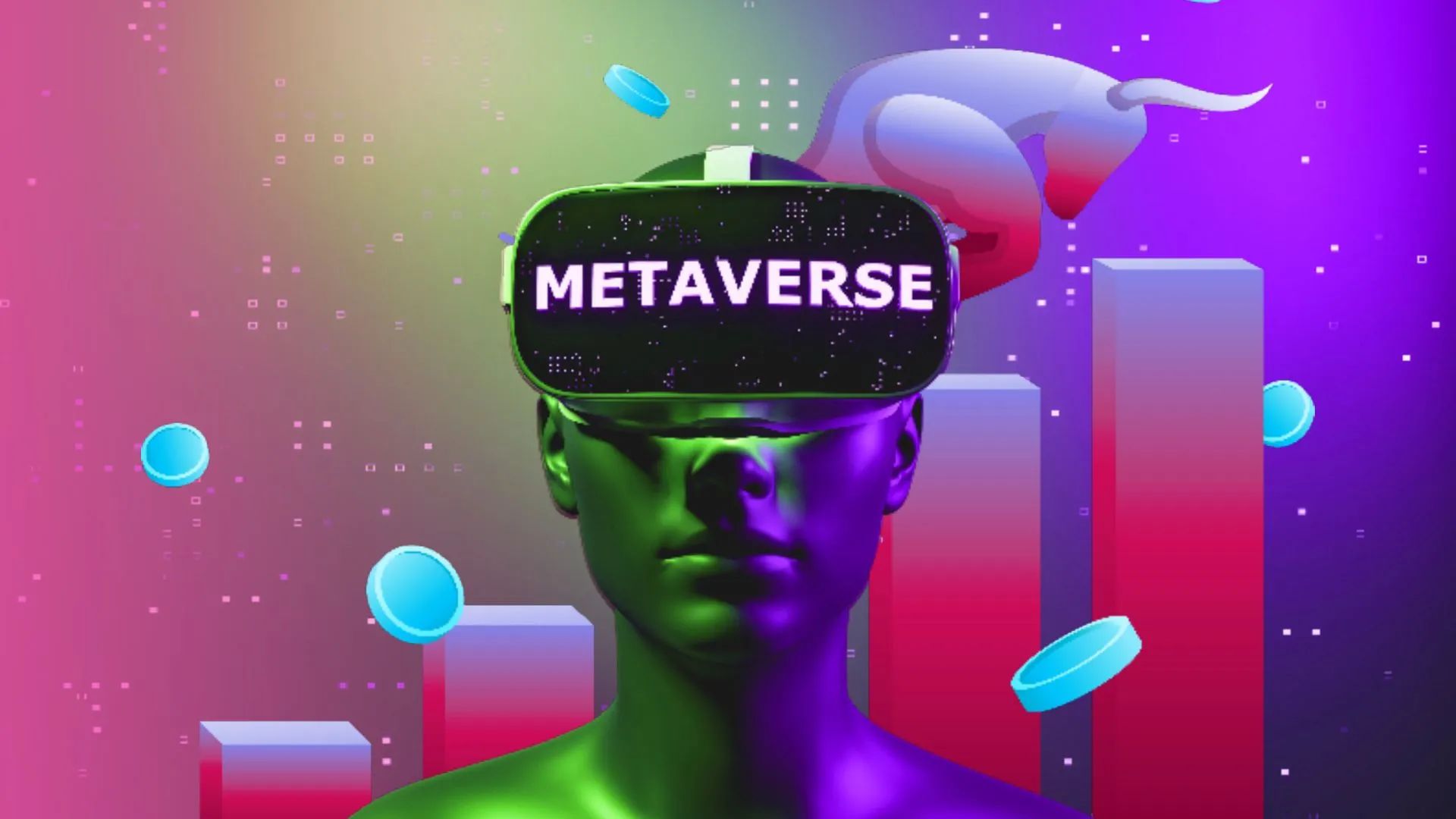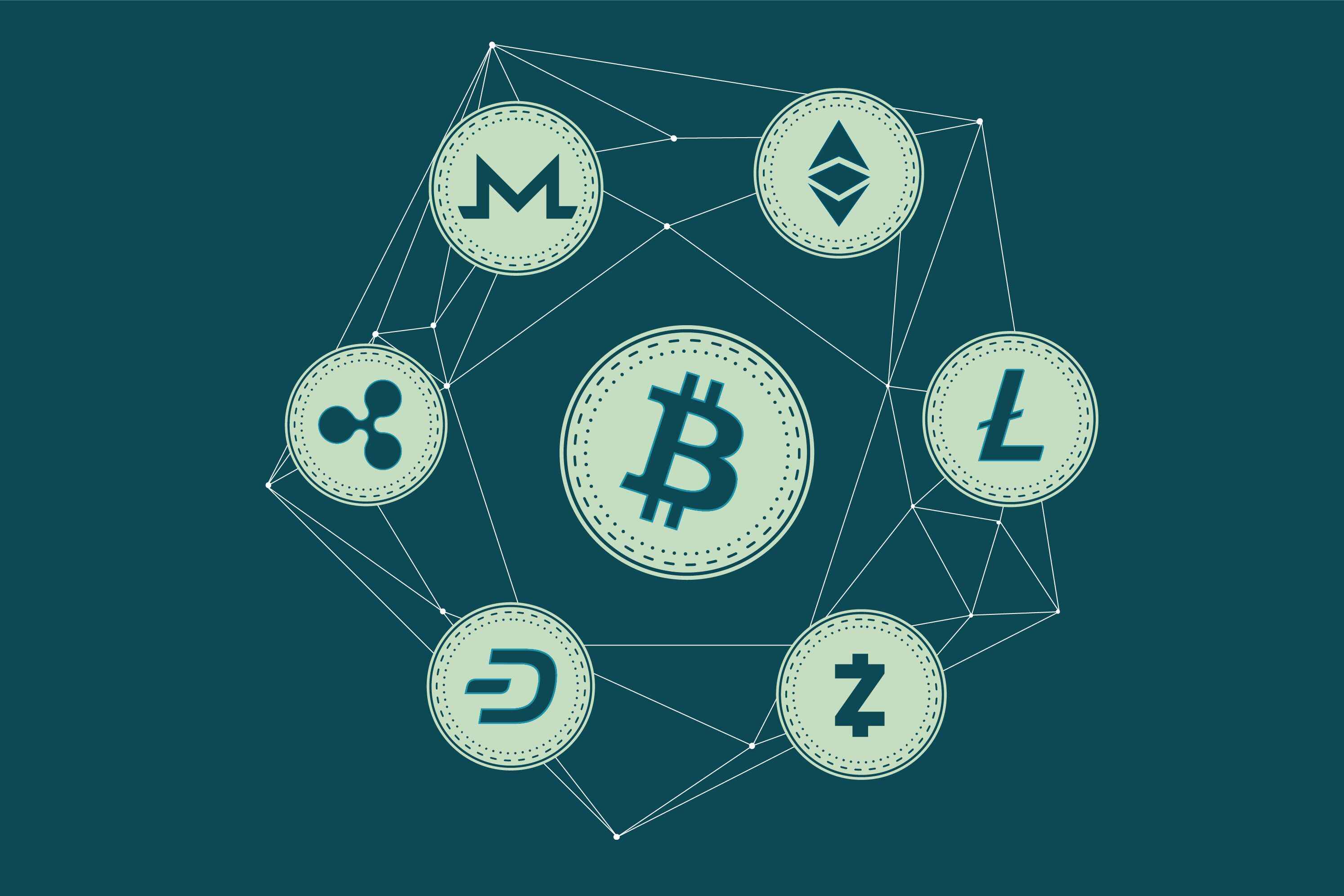Introduction
Welcome to the future of the digital world – the Metaverse. Over the past few years, the term “Metaverse” has gained significant attention and has become a hot topic in the tech and investment sectors. But what exactly is the Metaverse and why is it becoming such a buzzword?
The Metaverse can be described as a virtual universe, a collective virtual shared space that encompasses all digital platforms, including augmented reality (AR), virtual reality (VR), video games, social media, and more. It is an immersive and interactive digital realm where users can not only consume content but also create and interact with others, blurring the lines between the physical and digital worlds.
The concept of the Metaverse draws inspiration from science fiction novels and films, where characters enter a virtual world to live out alternate lives or experiences. However, the reality of the Metaverse is rapidly catching up, with the advancements in technology and the growing popularity of virtual reality devices.
The potential of the Metaverse is vast and transformative. It has the ability to revolutionize various industries, including entertainment, education, e-commerce, and even workspaces. Imagine attending a virtual concert of your favorite artist, exploring a virtual museum, or even attending virtual business meetings – all from the comfort of your own home.
As the Metaverse gains momentum, it presents exciting investment opportunities for individuals and organizations. Just like any emerging industry, investing in the Metaverse comes with its own set of risks and challenges. However, for those willing to seize the potential, the rewards could be substantial.
In this article, we will explore the different types of investments available in the Metaverse and discuss the requirements, risks, and challenges associated with these investments. Whether you are a tech enthusiast, a gamer, or an investor looking to capitalize on the growing digital landscape, this guide will provide you with the insights you need to navigate the world of Metaverse investments.
What is the Metaverse?
The term “Metaverse” refers to a virtual universe, a digital realm beyond the physical world that encompasses various interconnected platforms and environments. It is a convergence of augmented reality, virtual reality, video games, social media, and other digital experiences. In the Metaverse, users can interact, explore, create, and engage with others in ways that were previously unimaginable.
Imagine stepping into a virtual world where you can attend live events, interact with AI-powered characters, buy virtual property, and even earn a living through virtual businesses. The Metaverse blurs the boundaries between the physical and digital worlds, allowing users to transcend the limitations of their physical existence.
In the Metaverse, users have the freedom to create their own avatars, customize their appearance, and explore virtual environments. They can connect with friends, collaborate with strangers, and participate in a range of virtual experiences. From virtual meet-ups to virtual concerts, the possibilities within the Metaverse are virtually endless.
One of the defining features of the Metaverse is its immersive nature. With the help of virtual reality devices and other interactive technologies, users can experience a heightened sense of presence in the virtual world. They can walk through virtual environments, interact with objects, and communicate with others in real-time.
The Metaverse is not limited to a single platform or application. It is an interconnected network of digital spaces, each offering unique experiences and opportunities. Users can seamlessly navigate between different platforms, carrying their virtual identities, assets, and achievements with them.
As the Metaverse continues to evolve, it has the potential to reshape various industries. For instance, in the entertainment industry, virtual concerts and events hosted within the Metaverse can provide a new way for artists to engage with their fans. In the education sector, the Metaverse can offer immersive and interactive learning experiences. In e-commerce, virtual shopping experiences can replicate the thrill of browsing physical stores.
The concept of the Metaverse is still evolving, and its full potential is yet to be realized. However, it is clear that the Metaverse represents a major shift in how we interact with technology and each other. It opens up a world of possibilities, where the boundaries of time, space, and reality are expanded, and new forms of social interactions and economic opportunities emerge.
The Potential of the Metaverse
The Metaverse has the potential to revolutionize the way we live, work, and interact in the digital age. Its impact extends beyond entertainment and gaming, transforming various industries and shaping the future of our virtual experiences. Here are some key areas where the Metaverse holds immense potential:
1. Social Interaction: The Metaverse opens up new possibilities for social interaction, allowing people from different parts of the world to connect, collaborate, and socialize in virtual environments. It enables users to build communities, attend virtual gatherings, and create meaningful relationships in ways that were previously limited by physical boundaries.
2. Collaborative Workspaces: The Metaverse has the potential to redefine the concept of traditional workplaces. Virtual offices and meeting spaces can enable remote teams to collaborate in real-time, improving productivity and reducing the need for physical infrastructure. It also offers opportunities for telecommuting, eliminating geographical barriers and creating a more flexible work environment.
3. Education and Training: The immersive nature of the Metaverse makes it an ideal platform for education and training. It can provide interactive and engaging learning experiences, allowing students to explore virtual environments, conduct experiments, and collaborate with peers and educators. It also presents opportunities for skills training and professional development in a simulated and safe environment.
4. Entertainment and Media: The Metaverse has the potential to revolutionize the entertainment industry by offering immersive and interactive experiences. Virtual concerts, live events, and interactive storytelling can provide unique and engaging entertainment options for audiences worldwide. It also allows content creators to experiment with new forms of media and engage with fans in innovative ways.
5. E-commerce and Virtual Economies: The Metaverse can transform the way we shop and transact online. Virtual marketplaces within the Metaverse can enable users to buy and sell virtual goods, assets, and services. It also opens up opportunities for virtual businesses and entrepreneurship, where individuals can create and monetize their virtual creations or services.
6. Healthcare and Therapy: The Metaverse has the potential to improve healthcare and therapy through virtual reality experiences. It can be used for pain management, rehabilitation, mental health treatments, and simulations for medical professionals. The immersive nature of the Metaverse can enhance the effectiveness and reach of various healthcare interventions.
7. Real Estate and Architecture: Virtual real estate within the Metaverse presents new avenues for architectural design, urban planning, and property development. Virtual spaces can be used to visualize and simulate real-world constructions and provide immersive experiences for potential buyers or tenants. It also allows for the creation of virtual landmarks and spaces that transcend the limitations of physical structures.
The potential of the Metaverse is still being explored, and its future growth is influenced by technological advancements and user adoption. However, it is clear that the Metaverse holds immense promise for transforming our digital experiences and shaping the way we interact, work, and live in the years to come.
Types of Investments in the Metaverse
Investing in the Metaverse offers a variety of opportunities for individuals and organizations alike. As this emerging digital landscape continues to expand, here are some key types of investments to consider:
1. Virtual Real Estate: Just like physical real estate, virtual real estate within the Metaverse holds significant value. Investors can purchase virtual land, properties, or spaces within virtual worlds. These virtual properties can appreciate in value as demand increases, and investors can monetize them through rentals, events, or by selling them to other users.
2. Virtual Goods and Assets: Virtual goods and assets are another popular investment avenue in the Metaverse. This includes collectibles, rare items, virtual currencies, and other digital assets within virtual worlds. Investors can buy, trade, and sell these virtual items, taking advantage of scarcity and demand to generate profits.
3. Virtual Currencies: Cryptocurrencies play a significant role in the Metaverse economy. These digital currencies, often referred to as “tokens” or “coins,” enable transactions and economic activities within virtual worlds. Investors can trade, invest, or speculate on these virtual currencies, taking advantage of market fluctuations and potential growth.
4. Metaverse Companies and Startups: Investing in companies and startups focused on the development of Metaverse technologies and platforms can be a lucrative opportunity. These companies may be involved in virtual reality, augmented reality, gaming, social media, or other Metaverse-related industries. Investors can support the growth and development of these companies while potentially benefiting from their success.
5. Virtual Advertising and Sponsorship: With the growing presence and engagement in the Metaverse, advertising and sponsorship opportunities are emerging. Investors can explore partnerships with virtual content creators, events, or platforms to promote their brands or products within the virtual world. This form of investment allows for unique and targeted marketing strategies.
6. Metaverse Infrastructure and Technologies: Another investment opportunity lies in the development of Metaverse infrastructure and technologies. This includes investing in companies that provide the essential tools, platforms, or technologies necessary to build and sustain the Metaverse ecosystem. Examples include virtual reality devices, augmented reality platforms, or software enabling seamless interactions between different virtual worlds.
7. Research and Education: As the Metaverse continues to evolve, there is a need for research, education, and training to support its growth. Investors can contribute by funding research initiatives, educational programs, or training opportunities focused on understanding and harnessing the potential of the Metaverse. This form of investment can help shape the future of the Metaverse ecosystem.
It is important to note that investing in the Metaverse comes with risks and uncertainties. The market is still developing, and the value of virtual assets and currencies can fluctuate. Additionally, as with any investment, thorough research, due diligence, and risk assessment are essential before making any investment decisions.
As the Metaverse continues to gain traction and expand, new types of investments may emerge. Staying informed, being adaptable, and identifying opportunities within this dynamic landscape can help investors capitalize on the potential growth and returns offered by the Metaverse.
Investing in Virtual Real Estate
Virtual real estate is one of the most popular and exciting investment opportunities within the Metaverse. Similar to physical real estate, investing in virtual land and properties can yield substantial returns as the demand for virtual spaces increases. Here’s a closer look at investing in virtual real estate:
1. Purchasing Virtual Land: Just as you can buy a plot of land in the physical world, in the Metaverse, you can purchase virtual land within different virtual worlds or platforms. These virtual lands can range from small parcels to expansive territories. The value of virtual land can appreciate over time as the popularity and user base of the virtual world grows.
2. Monetizing Virtual Properties: Once you own virtual land, there are multiple ways to monetize it. You can rent out your virtual properties to other users for virtual events, exhibitions, or commercial activities. Some virtual worlds even allow you to develop and sell virtual buildings or structures on your land, generating income through virtual commerce.
3. Virtual Property Development: Similar to physical real estate development, investing in virtual real estate allows you to develop virtual properties for various purposes. You can create virtual resorts, shopping centers, museums, or event venues on your virtual land and generate revenue through user visits, ticket sales, or in-world purchases.
4. Flipping Virtual Properties: Buying low and selling high is a popular strategy in both physical and virtual real estate. Just like in the physical world, investors in the Metaverse can purchase undervalued virtual properties and later sell them at a higher price. As the virtual world gains traction and user interest increases, the value of virtual properties can rise significantly.
5. Investing in Virtual Real Estate Companies: Another way to participate in the virtual real estate market is by investing in companies that operate within the Metaverse and focus on virtual real estate development. These companies may specialize in creating virtual worlds, building virtual infrastructure, or offering services related to virtual property management. Investing in such companies allows you to indirectly benefit from the growth of the virtual real estate market.
Before diving into virtual real estate investments, it is essential to consider some factors. Firstly, research the virtual world or platform where the virtual property is located. Look for communities, user engagement, and the potential for growth. Additionally, explore the terms and conditions of the virtual world regarding property rights, ownership, and monetization options. Understand the market trends, demand, and competitive landscape within the virtual real estate sector.
While investing in virtual real estate has its potential rewards, it’s important to be aware of the risks as well. The value of virtual properties can fluctuate, and the market is still new and evolving. Additionally, there may be legal and regulatory considerations to understand, as virtual property rights and intellectual property issues are evolving areas.
Investing in virtual real estate requires a forward-thinking perspective and a thorough understanding of the virtual world you’re investing in. By staying informed, conducting due diligence, and adapting to the dynamic nature of the market, investors can seize the opportunities presented by virtual real estate investments and potentially reap significant rewards within the expanding Metaverse.
Investing in Virtual Goods and Assets
Investing in virtual goods and assets is a lucrative avenue within the Metaverse that allows investors to capitalize on the growing demand and scarcity of unique digital items. Similar to collectibles in the physical world, virtual goods and assets can appreciate in value over time. Here’s a closer look at investing in virtual goods and assets:
1. Collectibles and Rare Items: Virtual worlds and games within the Metaverse often have collectible virtual items that hold significant value. These items can range from limited edition character skins and weapons to rare in-game achievements or virtual trading cards. Investing in these collectibles can yield substantial returns as their scarcity and desirability increase among the growing user base.
2. Virtual Art and Creations: The Metaverse has become an emerging platform for digital artists to showcase their work and sell virtual art. Investors can support artists and collect their digital creations, which can appreciate in value as the artist gains popularity or when sold to other collectors. Virtual sculptures, virtual reality experiences, or even digital fashion items are examples of digital art that can be invested in.
3. Virtual Currency: Many virtual worlds within the Metaverse have their own native virtual currencies. These currencies can be used to purchase virtual goods, trade with other users, or even convert into real-world currencies. Investing in virtual currencies can be beneficial if the currency gains value or becomes widely accepted within the virtual world community.
4. Gaming Items and Skins: In the gaming industry, certain items or skins for characters, weapons, or accessories can become highly sought-after by players. These items can be traded or sold within the game or on external virtual item marketplaces. Investing in rare gaming items or popular skins can yield profits as demand and scarcity drive up their value.
5. Virtual Real Estate: Virtual real estate, as mentioned in a previous section, can also be considered a type of virtual asset. Investing in virtual land or properties within virtual worlds allows investors to benefit from the appreciation of these assets over time. Virtual real estate can be monetized through rentals, sales, or development, providing income streams and potential returns on investment.
When investing in virtual goods and assets, it is crucial to research and understand the specific virtual world or platform where these items exist. Familiarize yourself with the community, user engagement, and the potential for growth and longevity of the virtual ecosystem. Additionally, consider factors such as the rarity, utility, and desirability of the virtual goods or assets you are investing in.
As with any investment, there are risks involved in investing in virtual goods and assets. The value of these items can be influenced by market trends, the popularity of the virtual world, and the gaming or digital art community. Furthermore, regulatory considerations, such as terms and conditions related to ownership and transferability, can impact the investment potential.
Investing in virtual goods and assets requires a keen understanding of the virtual world’s dynamics and a careful evaluation of the potential return on investment. By staying informed, monitoring trends, and assessing market demand, investors can leverage the opportunities presented by the Metaverse to build a valuable portfolio of virtual goods and assets.
Investing in Virtual Currencies
Virtual currencies play a pivotal role within the Metaverse, serving as the medium of exchange for various transactions and economic activities. Investing in virtual currencies can be a rewarding endeavor, as their value can appreciate over time. Here’s a closer look at investing in virtual currencies within the Metaverse:
1. Native Virtual Currencies: Many virtual worlds or platforms within the Metaverse have their own native virtual currencies. These currencies are used to purchase virtual goods, services, and assets within the platform. Investing in these native virtual currencies can be beneficial if the platform experiences growth, user adoption, or if the currency becomes widely accepted and traded among the Metaverse community.
2. Blockchain-Based Virtual Currencies: Some virtual currencies in the Metaverse are built on blockchain technology, similar to cryptocurrencies in the real world. These blockchain-based virtual currencies provide transparency, security, and decentralization, allowing for peer-to-peer transactions. Investors can speculate on the price movement of these virtual currencies, capitalize on market opportunities, or support promising blockchain projects within the Metaverse.
3. Trading and Speculation: Investing in virtual currencies within the Metaverse can involve trading and speculation, similar to traditional financial markets. Investors can buy virtual currencies at a lower price and sell them when the price increases, realizing profit from the price difference. This requires careful analysis of market trends, understanding supply and demand dynamics, and staying informed about the factors influencing virtual currency prices.
4. User-Generated Tokens: In some virtual worlds, users have the ability to create and issue their own tokens or digital assets. These user-generated tokens can have their own value and utility within specific communities or platforms. Investing in these tokens can involve identifying promising projects, assessing the potential for adoption and growth, and considering the utility and demand for the tokens within the corresponding ecosystem.
5. Virtual Currency Marketplaces: In the Metaverse, there are virtual currency marketplaces where users can trade, buy, and sell virtual currencies. Investors can participate in these marketplaces to acquire or liquidate virtual currencies, taking advantage of fluctuations in prices or the exchange rates between different virtual currencies.
When investing in virtual currencies, it is crucial to stay informed about the virtual world or platform where the currency operates. Understand the community, user engagement, development updates, and regulatory considerations specific to the virtual currency. Additionally, familiarize yourself with the technology underlying the virtual currency, such as blockchain, and evaluate the level of security and scalability it provides.
Investing in virtual currencies within the Metaverse also comes with risks. The value of virtual currencies can fluctuate based on market demand, user adoption, platform stability, and regulatory factors. It is important to exercise caution, conduct thorough research, and consider diversification when engaging in virtual currency investments.
As virtual economies within the Metaverse continue to evolve, the potential for investment in virtual currencies remains significant. By keeping a pulse on the latest developments, understanding the dynamics of virtual currency markets, and assessing the potential for growth and adoption, investors can leverage the opportunities presented by virtual currencies to enhance their investment portfolios.
Requirements for Metaverse Investments
Investing in the Metaverse requires careful consideration of several key factors to ensure a successful and rewarding investment experience. Here are some of the requirements that investors should be aware of before delving into Metaverse investments:
1. Technological Infrastructure: Metaverse investments often rely on the underlying technological infrastructure. This includes having access to a capable device, such as a virtual reality headset or a powerful computer system, to fully experience and engage with the Metaverse. Additionally, a stable internet connection is necessary for seamless interactions within virtual worlds.
2. Familiarity with Virtual Environments: Investors should familiarize themselves with the virtual environments, platforms, and communities they are considering for investment. Understanding the specifics of each platform, its user base, and the ecosystem it operates within is crucial to assessing the investment potential and making informed decisions.
3. Knowledge of Virtual Markets: Acquiring knowledge about the virtual markets within the Metaverse is essential. Stay informed about the trends, dynamics, and current valuations of virtual assets, currencies, and properties. Understanding the supply and demand fundamentals, as well as the factors driving the market, helps in identifying investment opportunities and managing risk effectively.
4. Risk Management: Like any investment, risk management is crucial in the Metaverse. Understand the potential risks and challenges associated with Metaverse investments, such as market volatility, regulatory uncertainties, and technological limitations. Diversify your investments across different virtual assets, currencies, or platforms, and consider setting a budget for your Metaverse investment portfolio.
5. Legal and Regulatory Compliance: Metaverse investments may be subject to legal and regulatory considerations. Research and comply with the regulations governing virtual assets, digital currencies, and virtual real estate in your jurisdiction. Be aware of the terms and conditions set forth by virtual worlds and platforms regarding ownership rights, monetization options, and intellectual property rights.
6. Constant Learning: Success in Metaverse investments requires continuous learning and staying up-to-date with the latest developments in technology, platforms, and investment opportunities. Engage in communities and forums related to the Metaverse, collaborate with other investors, and exchange insights and knowledge to expand your understanding and make informed investment decisions.
7. Long-Term Perspective: Metaverse investments may take time to yield substantial returns. It is crucial to have a long-term perspective and patient approach when investing in the Metaverse. Evaluate investments based on their potential for growth, adoption, and long-term sustainability, rather than focusing solely on short-term gains.
By meeting these requirements and taking a thoughtful approach to Metaverse investments, investors can position themselves to take advantage of the opportunities presented by this emerging digital landscape. The Metaverse has the potential to reshape industries and create new economic possibilities, making it an exciting frontier for forward-thinking investors.
Risks and Challenges of Metaverse Investments
While investing in the Metaverse presents exciting opportunities, it also comes with its fair share of risks and challenges. Understanding and managing these risks is crucial for navigating the dynamic landscape of Metaverse investments. Here are some of the key risks and challenges to consider:
1. Market Volatility: The Metaverse market can be highly volatile, with the value of virtual assets, currencies, and properties experiencing significant fluctuations. Factors such as changes in user preferences, technological advancements, and regulatory developments can have a direct impact on the market. Investors must be prepared for the possibility of price swings and assess their risk tolerance accordingly.
2. Regulatory Uncertainty: The regulatory environment surrounding the Metaverse is still developing and varies across different jurisdictions. Applicable laws and regulations pertaining to virtual assets, digital currencies, and virtual real estate can impact the investment landscape. Adapting to changing regulations and ensuring compliance is essential to mitigate potential legal risks.
3. Technological Limitations: The Metaverse relies on sophisticated technology, and its success depends on the continuous advancement and adoption of these technologies. However, technical limitations, such as scalability constraints, interoperability issues, and potential security vulnerabilities, can pose challenges to the development and widespread adoption of the Metaverse. Investors need to be aware of these limitations and evaluate the technical robustness of the platforms they invest in.
4. Lack of Standardization: The Metaverse consists of various virtual worlds, platforms, and ecosystems, each with its own set of rules, currencies, and user bases. The lack of standardization poses challenges in interoperability and liquidity across different virtual environments. Investors should be cautious of the potential limitations and fragmentation caused by this lack of standardization.
5. Counterparty Risk: Metaverse investments may involve engaging with decentralized platforms, peer-to-peer transactions, or interacting with other users within virtual worlds. These interactions come with inherent counterparty risks, such as trustworthiness, fraud, or disputes. Conducting thorough due diligence, using secure platforms, and being cautious when participating in virtual transactions are important steps to mitigate counterparty risks.
6. User Adoption and Network Effects: The success of Metaverse investments depends on user adoption and the network effects within specific virtual worlds or platforms. The value of virtual assets and currencies often relies on the size and engagement of the user community. It is important to evaluate the growth potential, user activity, and market dynamics of the virtual environment before making investment decisions.
7. Economic and Legal Considerations: The virtual economies within the Metaverse may be subject to economic factors, including inflation, deflation, or changes in the virtual market conditions. Additionally, legal considerations, such as property rights, intellectual property, and ownership disputes, can arise. Investors need to be prepared to navigate these economic and legal challenges to protect their investments.
Investing in the Metaverse requires careful risk assessment, due diligence, and adaptability. Diversifying investments, staying informed about market trends and developments, and working with reputable platforms can help mitigate risks and maximize the potential for returns within the Metaverse investment landscape.
Conclusion
The Metaverse presents an exciting and rapidly evolving landscape for investors seeking opportunities in the digital realm. With its immersive virtual environments, virtual economies, and interconnected platforms, the Metaverse has the potential to reshape industries, transform social interactions, and create new economic avenues.
Investing in the Metaverse offers various avenues, including virtual real estate, virtual goods and assets, virtual currencies, and supporting Metaverse companies and startups. However, it is essential to adhere to certain requirements to ensure a successful investment experience. These include understanding the technological infrastructure, becoming familiar with virtual environments, staying informed about virtual markets, and managing risk effectively.
While the Metaverse presents opportunities, it also comes with risks and challenges. Market volatility, regulatory uncertainties, technological limitations, lack of standardization, counterparty risks, user adoption, and legal considerations are factors to consider and mitigate when engaging in Metaverse investments.
As the Metaverse continues to evolve and gain traction, staying informed, conducting thorough research, and adapting to market trends and regulatory changes are crucial for successful investments. Engaging with communities and forums, collaborating with other investors, and continuously expanding knowledge about the Metaverse can provide valuable insights and strategic advantages.
Investing in the Metaverse requires a balance of optimism and caution. It is an emerging frontier that offers immense potential for those willing to navigate its unique landscape. By understanding the risks, leveraging the opportunities, and aligning investments with personal goals, investors can position themselves to benefit from the technological advancements and economic growth within the Metaverse.

























